24 June 2025
Take a journey to CWGC sites across the globe with the For Evermore App
Have you seen the new CWGC For Evermore app? Download it today to kick-start your global journey through our cemeteries and memorials.
For Evermore App
What is the For Evermore app?
For Evermore is our new free mobile app which bridges physical and digital commemoration.
Powered with our partners at Memory Anchor, For Evermore is available to download today for iOS and Android.
Download on iOS Download on Android
What can you do with the For Evermore app?
Virtual tours of CWGC sites
Whether you’re out and about visiting one of our sites in person, or you want to experience one for yourself but can’t get there, you can enjoy guided tours around our sites with the App.
Curated by CWGC’s expert historians, we’ve compiled tours of some of our most visited sites around the world. Tour stops include unique cemetery features, historical talking points, and the war graves of some of those commemorated at your chosen tour site.
If you’re there in person, the tour stops are clearly labelled and easy to follow. Tours should last no more than one hour, but they are still packed with information designed to enhance your visit.
Can’t make it to a CWGC site in person, but want to learn more about it and who it commemorates?
Download the For Evermore app and tour 75 global CWGC cemeteries and memorials from the comfort of your own home.
Whether you’re interested in the Western Front’s former battlefields, or sites commemorating the fallen of the Asia/Pacific campaign, and everything in between, you’ll be able to explore and discover more about the history of the World Wars and the people who fought them with the For Evermore app.
Five sites to visit on the For Evermore app
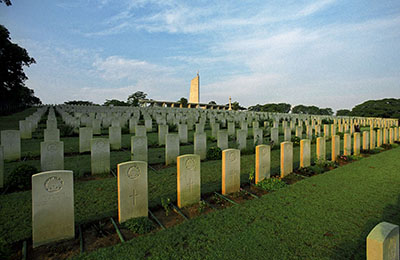
Kranji War Cemetery
Kranji War Cemetery in the heart of Singapore is home to over 4,400 Second World War war graves. It is one of our most iconic and largest cemeteries in Asia.
So, who is commemorated at Kranji? Australian, British, Indian and New Zealand servicemen are buried here, victims of the fall of Singapore or the shocking treatment meted out to Japanese prisoners of war.
On this tour of Kranji War Cemetery, you can learn about its conception, its design, its unique features, and the stories of some of those buried here, all without travelling potentially thousands of miles.
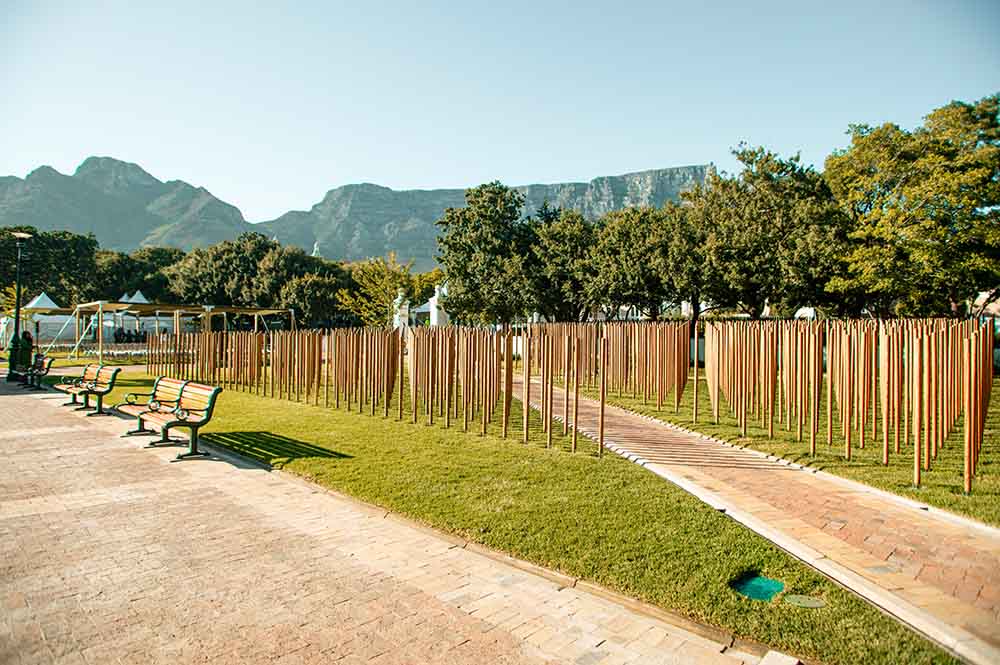
Cape Town Labour Corps Memorial
From the largest to the latest, the Cape Town Labour Corps Memorial is the first Commonwealth War Graves Commission memorial to be opened for decades.
Opened in January 2025, the Cape Town Labour Corps Memorial honours more than 1,700 South Africans who served in non-combat roles and perished with no known grave or commemoration.
Thanks to the pioneering work of the Non-Commemorations Project team, thousands of men are now able to be commemorated by name. While there is still work to be done, the Cape Town Labour Corps Memorial marks an important milestone in achieving proper commemoration for previously overlooked casualties.
Thousands of South Africans served in non-combat roles supporting British and Imperial troops in the Great War. They were vital in keeping East African campaigns supplied, but their service came at a terrible cost. Many tragically died in harsh conditions far from home.
Download the For Evermore app to learn the story of the Cape Town Labour Corps memorial from conception to completion.
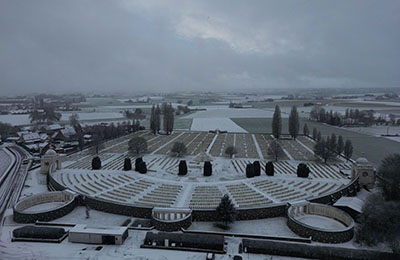
Tyne Cot Cemetery
Where would the For Evermore app be without the inclusion of the Commonwealth War Graves’ largest cemetery in the world?
Tyne Cot is probably the most easily recognisable of our First World War locations. Holding almost 12,000 burials, over 8,000 of which are unidentified, the site is a moving, powerful reminder of the bitter cost of war.
The cemetery sits in the heart of the former Passchendaele battlefields, site of some of the fiercest fighting of the Western Front. Because of its location, Tyne Cot also features some unique historic and geographic elements that distinguish it from other Western Front places of commemoration.
With Canadian, British, New Zealand, South African, and Australian soldiers commemorated here, representing nearly all the major Commonwealth nations that sent troops to serve in the Great War.
Don’t miss your chance to learn more about one of the most important CWGC sites. Download the app and get exploring.
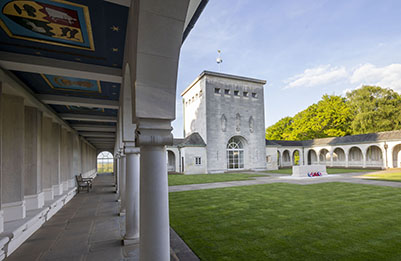
Runnymede Memorial
Explore the contribution the Air Services made to the Second World War in Europe and how the pilots and air crews are commemorated with a tour of the Runnymede Memorial.
Runnymede commemorates over 20,000 men and women of the air forces who were lost during operations from bases in the United Kingdom and North and Western Europe, and who have no known graves. They served in Bomber, Fighter, Coastal, Transport, Flying Training and Maintenance Commands, and came from all parts of the Commonwealth.
Some were from countries in continental Europe which had been overrun but whose airmen continued to fight in the ranks of the Royal Air Force.
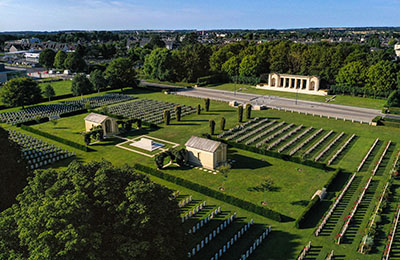
Bayeux War Cemetery
Bayeux War Cemetery is the largest Commonwealth cemetery of the Second World War in France, its rows of pristine headstones highlighting the enormous effort undertaken by Allied troops to defeat Nazi Germany in Normandy in the summer of 1944.
Bayeux itself saw little fighting, but the over 4,400 men buried here, taken in from surrounding districts and nearby hospitals, show us just how bloody D-Day and the Normandy campaign was.
As the largest of our sites in Normandy, the Bayeux War Cemetery makes the ideal starting point for any journey through Normandy, virtual or not!
Three tours to take on the For Evermore app
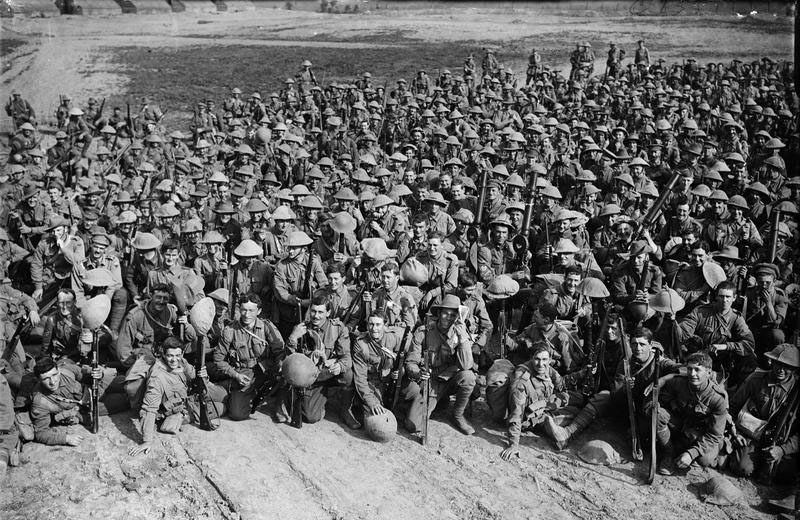
The ANZACs of Tyne Cot – Tyne Cot War Cemetery
780 of the over 3,500 identified casualties at Tyne Cot Cemetery are ANZACs, i.e., Australian and New Zealand soldiers of the Australian and New Zealand Army Corps
Kiwis and Aussies fought in some of the toughest campaigns on the Western Front, including the grim action on Bellevue Spur, where 800 New Zealanders died in one day, to the 3rd Australian Division’s efforts at Passchendaele.
You can discover the stories of some of the ANZACs of the Western Front with the ANZACs of Tyne Cot tour. It features several stories of Australian and New Zealand servicemen buried or commemorated within CWGC’s largest war cemetery, including a Victoria Cross winner, to a former Australian international rugby player.
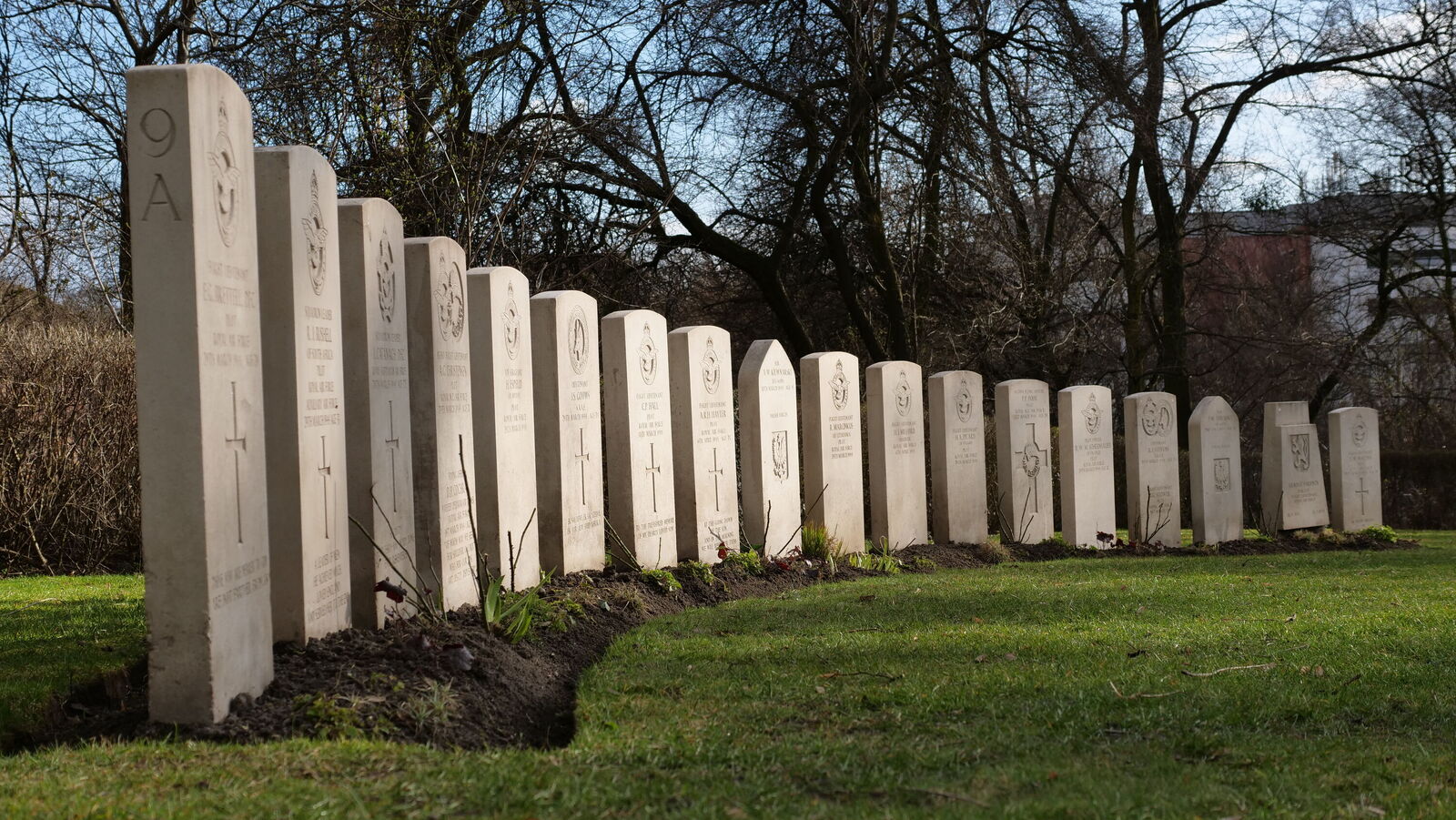
The Great Escape - Poznan Old Garrison Cemetery
Among the everlasting stories of daring and courage in wartime is the Great Escape: the night when, in March 1944, 76 officers broke out of the German PoW camp Stalag Luft III in the largest mass Allied escape attempt of the war.
Immortalised in film, the Great Escape remains an enduring, enthralling and tragic tale of plucky wartime exploits.
But what about the real Great Escape? Despite the participants' unquestionable bravery and cunning, their liberty didn’t last long. All but three were recaptured in the weeks following their escape attempt. 50 were executed.
Of those 50 Great Escapers, 48 are buried in Poznan Old Garrison Cemetery. This tour allows you to put faces to names so you can learn more about the real people behind one of the Second World War’s most extraordinary events.

Air Crews Remembered - Reichswald Forest War Cemetery
For much of the Second World War, RAF Bomber Command fought an extensive bombing campaign over Germany, aimed at crippling industry and morale.
This was exceptionally dangerous work for the flight crews and airmen tasked with bombing Nazi Germany into submission. Around 50% of them were killed in action.
The Air Crews Remembered tour of Reichswald Forest War Cemetery commemorates the exploits, hardships, and deaths of RAF bomber crews during the Second World War.
Flying lengthy, nerve-shredding missions deep over enemy territory, these airmen were shot down during the intensive air war above Nazi Germany. Discover their stories, including some of the crews involved in the famous Dambusters raid of 1943, with this tour of Reichswald War Cemetery.
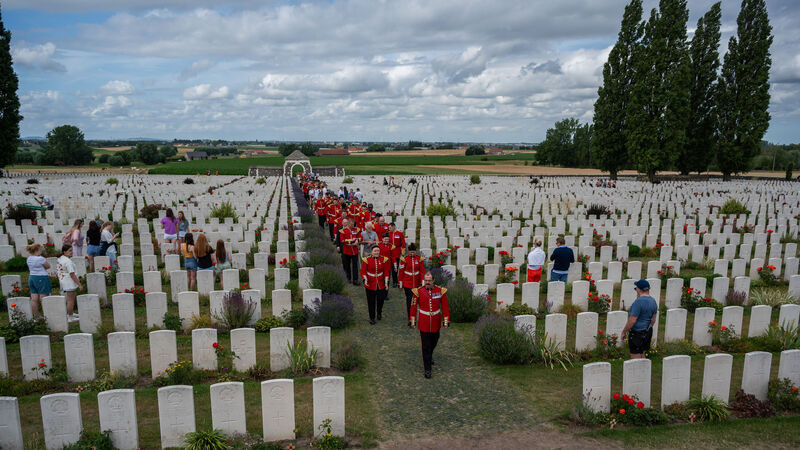
Want more stories like this delivered directly to your inbox? Sign up for our newsletter for regular updates on the work of Commonwealth War Graves, blogs, event news, and more.
Sign UpEvery story, For Evermore
The new app draws on our enormous digital archive, For Evermore: Stories of the Fallen, to share stories of those commemorated by our cemeteries and memorials.
We’ve collected thousands of stories from historians, researchers, and relatives about the men and women in our care. From Victoria Cross winners, civilian casualties, fallen Olympians, and many fascinating figures, these stories help turn a name on a headstone or memorial panel into more than just a memory.
For Evermore also draws on Memory Anchor’s augmented reality technology; you can visit a cemetery or memorial and scan a headstone to see if we’ve got a story about them using the app.
If we don’t, you’ll get that person’s commemoration info and anything else – and if you’re inspired enough, you could create their story and share it with us, ready for the next inquisitive visitor to uncover.
Three stories to read on the For Evermore app
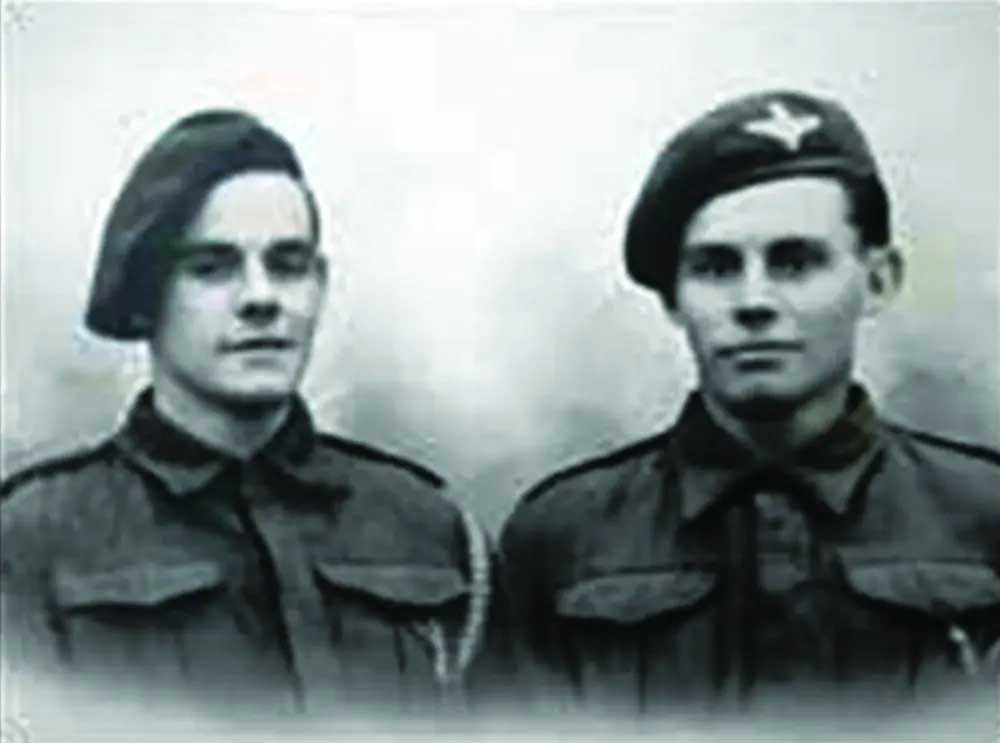
The Gronert Twins - Arnhem Oosterbeek War Cemetery
Claude and Tommy were two of the 17,000 Allied paratroopers to drop in the southern Netherlands for the ill-fated Operation Market Garden in September 1944. Sadly, Claude and Thomas would never make it back to England.
The twins died just seconds apart during the desperate, confused fighting to secure Arnhem during that fateful campaign. Now, the pair lie side-by-side for eternity in the peaceful confines of Arnhem Oosterbeek War Cemetery.
Claude and Tommy’s story is amongst the most heart-wrenching featured on the For Evermore app. The brothers had been inseparable in life; now, they are inseparable in death, victims of the campaign to liberate Europe from Nazi Germany.
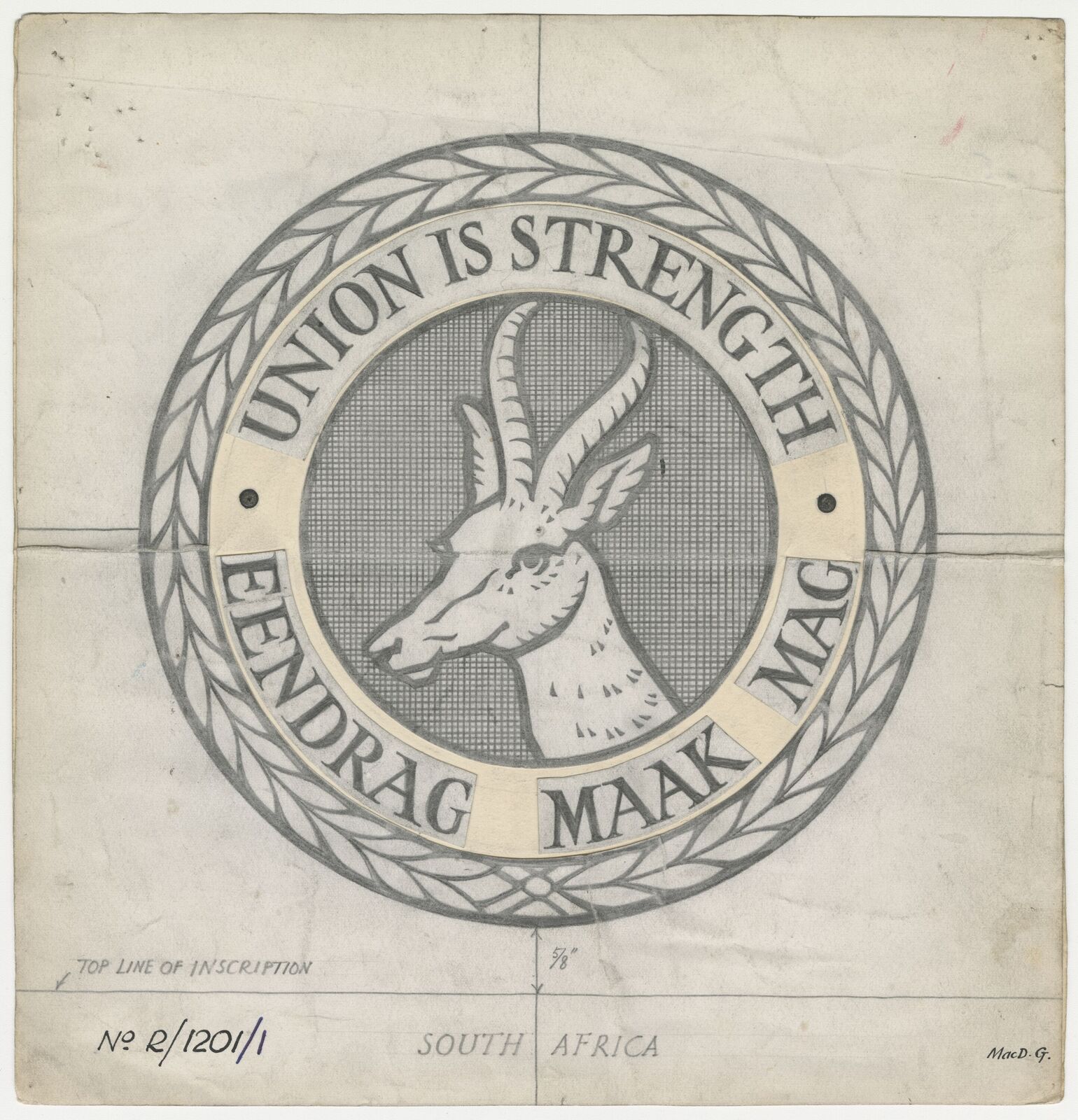
Zulu Madhliwa – Cape Town Labour Corps Memorial
The beauty of the Non-Commemoration Project’s work is the discovery of biographies and stories of newly researched names. Rather than being a line of text on a dusty ledger, they become real, living, breathing people.
Among the names added to the Cape Town Labour Corps Memorial was Zulu Madhliwa. Zulu enlisted as a Boatman and served with the South African Defence Department.
Sadly, he drowned when the boat carrying him and another labourer, Dolly Jenniker, got into trouble on the Orange River in January 1915.
Thanks to the research of the Non-Commemoration team, Zulu’s story and name has been preserved forever.
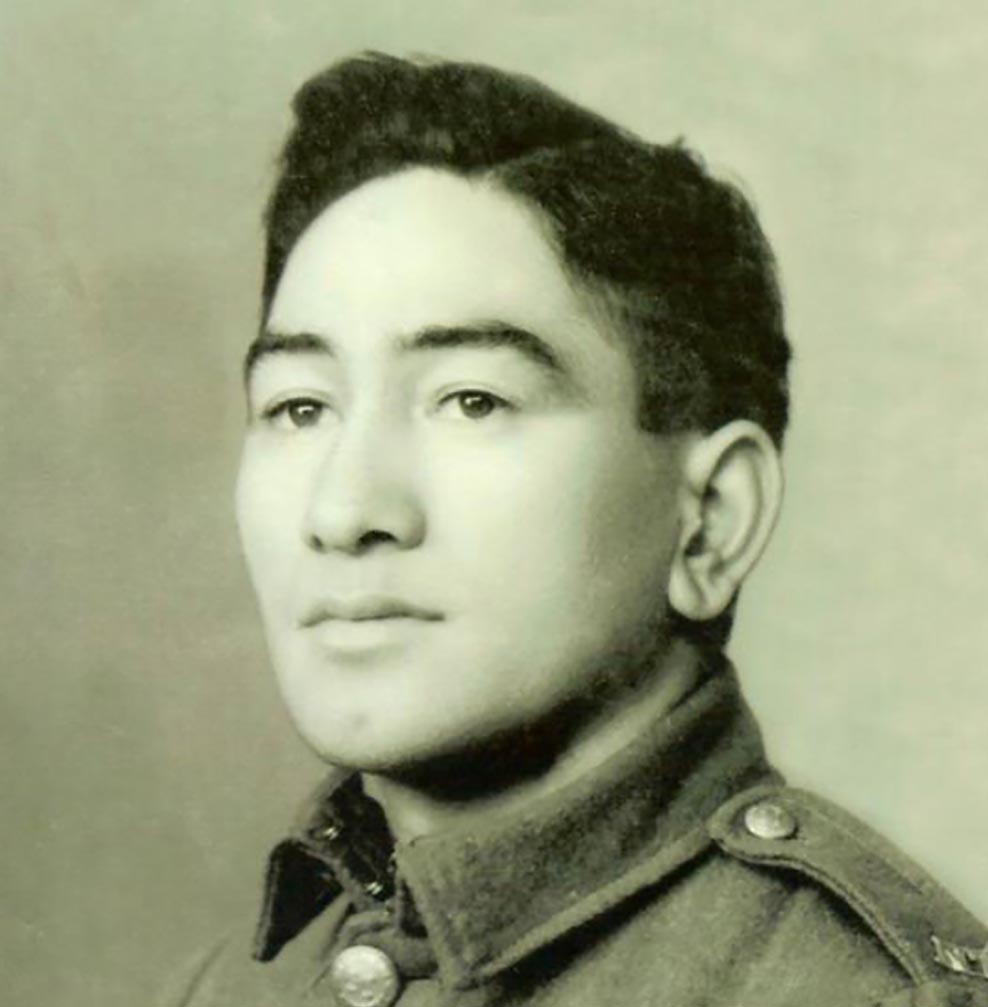
Private Charlie Hapeta – Cassino War Cemetery
Private Charlie Hapeta of Okaihau, Auckland, is symbolic of the international effort required to dislodge fascism from Italy in the Second World War.
Here is a Māori labourer, taken thousands of miles away by duty and circumstance, fighting alongside British, American, Canadian, Indian, and South African comrades, to bring down fascists halfway across the world.
Sadly, Charlie did not survive the war. He was killed in action at the climactic Battle of Monte Cassino, close to where he now rests at Cassino War Cemetery.
Download the For Evermore app today
The For Evermore app is available to download for free today for iOS and Android phones.
Download it today to explore our sites from the comfort of your own home or to greatly enhance your experience at select CWGC sites around the world.

